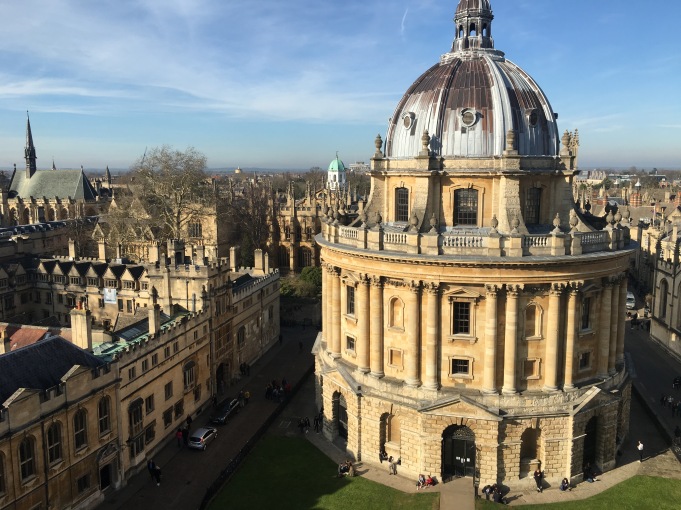
“If God Himself on earth abode would make/He Oxford, sure, would for his dwelling take.” – Dan Rogers
The famed spires of Oxford’s colleges stand tall amid the hustle and bustle of the city, above the fray. Oxford’s 150,000 residents, including 33,000 students, seem to accept the herds of tourists as a necessary part of the scenery. Buses careen by as pedestrians jostle for space. Yet the spires and the colleges themselves are aloof oases of peace and quiet in the middle of this ancient city. The poet Matthew Arnold famously called it “that sweet City with her dreaming spires.”
This is a city for lovers of literature and lovers of history, and it’s heaven to lovers of literary history. But even those with contemporary tastes flock to this haven where Tolkien wrote The Hobbit, C.S. Lewis wrote The Lion, the Witch and the Wardrobe—the first of his Narnia series, and Lewis Carroll created Alice in Wonderland. Fans of television mysteries come here to visit sites where Inspector Morse, the young Endeavour Morse, and Inspector Lewis solve so many murders. Harry Potter devotees come to see film locations such as the dining hall in Christchurch, which was the model for the one in Hogwarts.
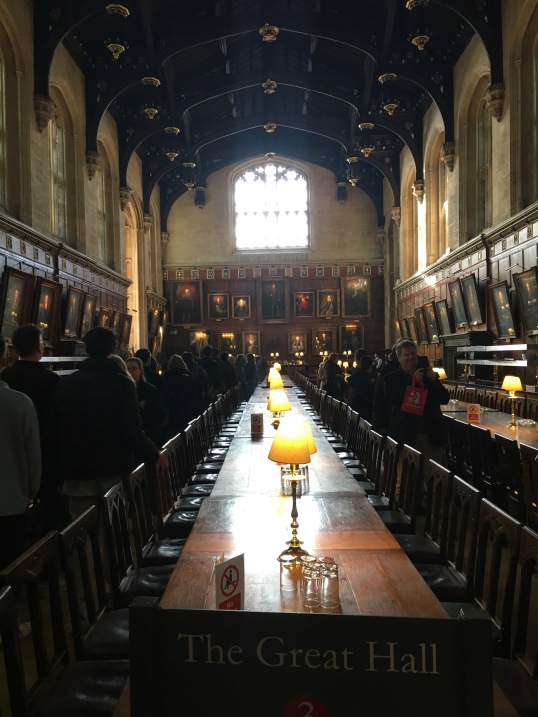
Only 97 kilometers (60 miles) separate Oxford from central London, so getting there entails a fairly easy day trip from there by car, bus, train or tour bus. Like London, it’s on the Thames River, and that’s at least partially why it exists. The city’s name was formerly Oxen-ford because it was the site of a river crossing.
The early years—a very short history
St. Frideswide is the patron saint and considered the founder of Oxford; she lived about 650-727. According to a plaque in the Museum of Oxford: “Frideswide set up a priory for monks and nuns. Algar, king of Mercia, tried to make Frideswide marry him but she ran away. While Algar was hunting for Frideswide he went blind. She cured him with water from a holy well and Algar let Frideswide go back to the priory.” Frideswide’s tomb and a stained glass window celebrating her life, created by Edward Burne-Jones in 1859, are in the Christ Church Cathedral.
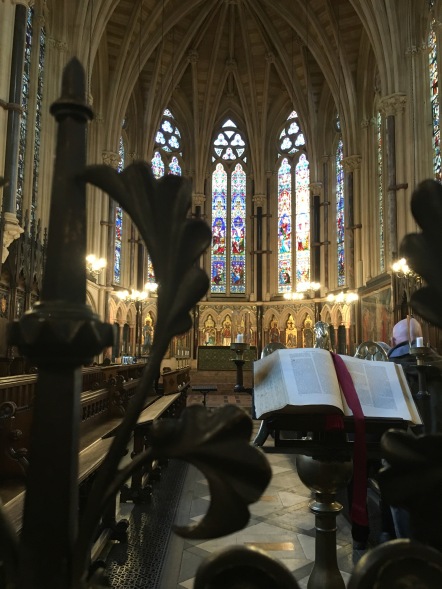
Other monasteries grew up around Frideswide’s, and such establishments were the center of learning in medieval times. Students came to study under the guidance of monk-scholars, and Oxford grew until, by the early 11th century, it was second in size only to London. With that growth came growing pains, and clashes between Oxford’s students and the town’s other residents led to fights and even riots. These were the original “town vs. gown” conflicts. Cambridge University was founded by scholars fleeing such fights in 1209, and scores of scholars were killed and maimed during a two-day battle in 1355.
Oxford was heavily damaged during the 1066 Norman Invasion, and its castle (now a tourist attraction) was built just after that to maintain the Norman occupation. Oxford is also noted in history for the burning of three protestant clerics during the Reformation (1555 and 1556), and for its fierce Royalist allegiance during the English Civil. Charles I held his court there in 1642 after he was expelled from London.
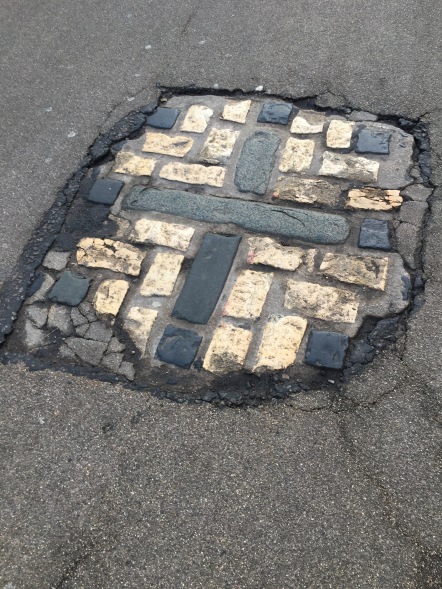
A Writers’ Inspiration
Since 1853, over 550 novels have been set or partly set in Oxford. Even before that, Geoffrey of Monmouth wrote his History of the Kings of Britain there around 1136; it is the source of our stories of King Arthur, the Round Table and Camelot. Shakespeare likely stayed in Oxford, may have been godfather to the son of the owner of the Crown Tavern, and his plays probably were performed in the courtyard there. Certainly J.R.R. Tolkien and C.S. Lewis, who were in a group called the Inklings that met at the Eagle and Child Pub (known locally as “the Bird and the Baby”), created works familiar to people today, as did Lewis Carroll (Charles Dodgson). The shop where the real Alice Liddell and the fictional Alice who went to Wonderland bought sweets is still functioning as Alice’s Shop on St. Aldates.
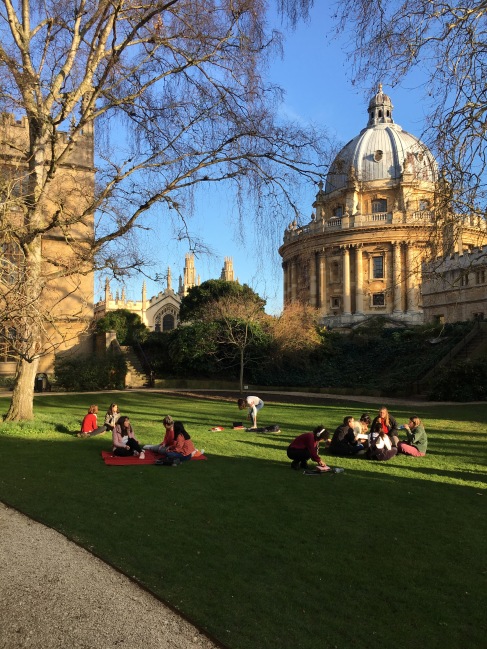
After St. Frideswide, Oxford was a male bastion for most of its existence, though women’s colleges began in the 1850s-1870s. Of Oxford’s 38 colleges, five were for women. Since 2008, the university’s web site notes, all colleges have admitted both men and women. Noted writers Iris Murdoch, Vera Brittain, Dorothy Sayers and P.D. James all hailed from Oxford as either students or residents.
And many more famed writers are connected to Oxford. Here are some of the best known, culled from Oxford: A Literary Guide:
T.E. Lawrence (Lawrence of Arabia, Seven Pillars of Wisdom), Adam Smith (Wealth of Nations), Aldous Huxley, Graham Greene, Matthew Arnold, G.M. Hopkins, William Golding, John Ruskin, W.H. Auden, Evelyn Waugh, John Wesley (founder of Methodist religion), David Cornwell (John LeCarre), John Fowles, Oscar Wilde, Samuel Johnson, Kingsley Amis, John Newman (church leader), Percy Shelley, and Henry James.
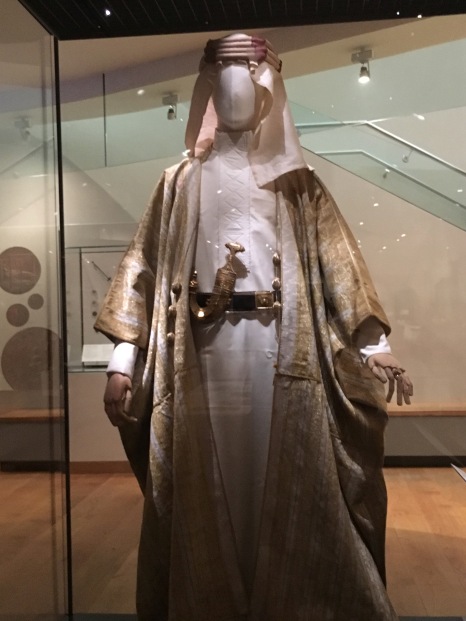
With this rich heritage, it’s not surprising that Oxford gets millions of visitors every year. Despite the crowds, people in Oxford are exceptionally courteous and polite, excusing themselves as they bump into you in the street and happily giving directions to disoriented tourists. The city is well worth a visit… or two or three.
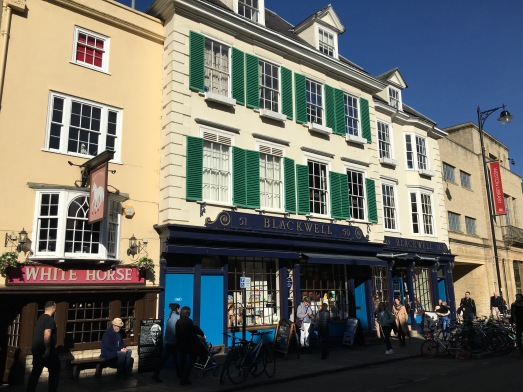
Here are a few travel tips and places to go:
–Check when colleges are open to the public (hours are usually posted on a board by the entrance of each college).
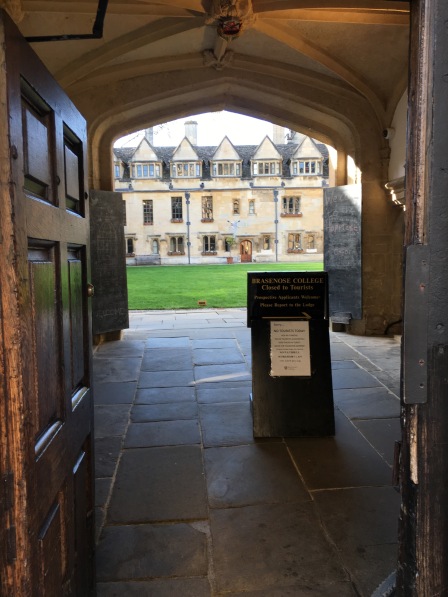
–For views, climb University Church of St. Mary the Virgin (127 steps, £3, sometimes a wait to get in the very small space) or Carfax Tower (99 steps).
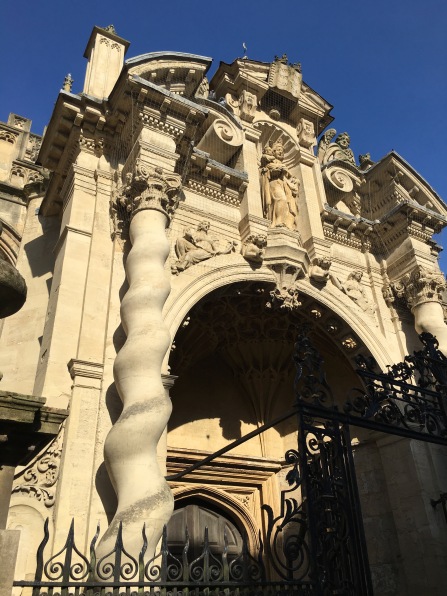
–The Ashmolean Museum of Art and Archaeology was the world’s first university museum: “Our world famous collections range from Egyptian mummies to contemporary art” (www.ashmolean.org); entry is free.
–General and themed walking tours abound: Harry Potter, Inspector Morse, Lewis and Endeavour (an excellent tour), Tolkien and more.
–The Museum of Oxford has a small but interesting collection housed in City Hall.
–Oxford Castle and Prison offers a historic overview.
–The Randolph Hotel has a Morse Bar, named after the fictional detective, which serves a Morse cocktail (worth every penny).
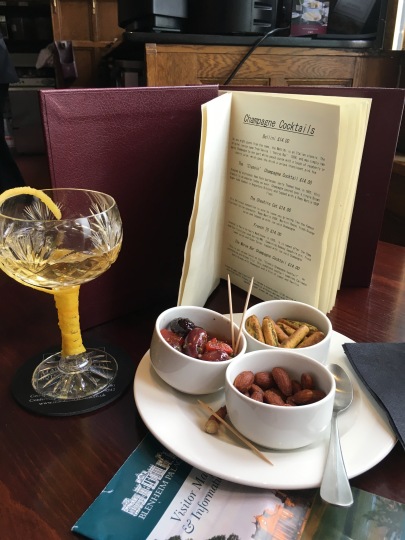
–Oxford’s pubs simply ooze history: Eagle & Child Pub, White Horse Pub on Broad Street next to famous the Blackwell Bookstore, one of the largest bookstores in the world, the hidden-away Turf Tavern where Bill Clinton famously didn’t inhale, and more.
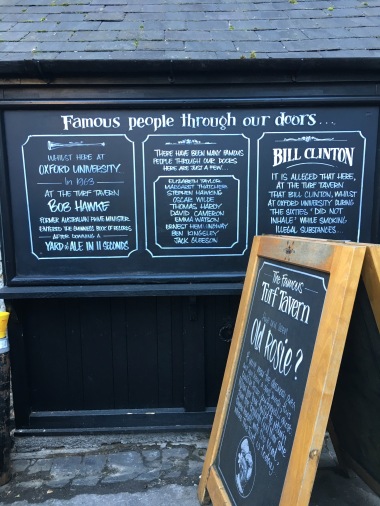
–The Sheldonian building is called Christopher Wren’s masterpiece and is now a concert and lecture hall.
–The Bodleian Library houses the most famous book collection in the world.
–The world-famous Rhodes scholarships are based in Oxford.
–The seemingly vast Covered Market offers shops of many kinds and places to eat.
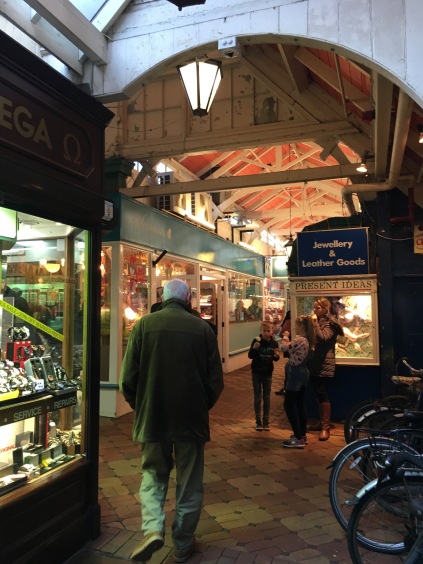
–A 24-hour bus pass costs £4.20; buses are a bit tricky to figure out–just because you get off the bus somewhere doesn’t mean you can get back on it anywhere nearby, so it’s good to spend some time figuring out the system.

Sources: Oxford: A Literary Guide by John Dugill, 2002 and 2006; Oxford, Pitkin Publishing, 2018 ; author’s three visits

Gosh, I loved this. I always imagine that if I ever went to Oxford, I would feel familiar vibes. I go through the entry arch and there I am in that big yard with paths crossing it. And yes I am meeting Endeavor, that sweet bloke. Thanks Lisa, see you soon. Amid the clever chatter at Trivia, I heard you’d be back in May!
LikeLiked by 1 person
Loved reading this. Thanks Lisa!
LikeLiked by 1 person